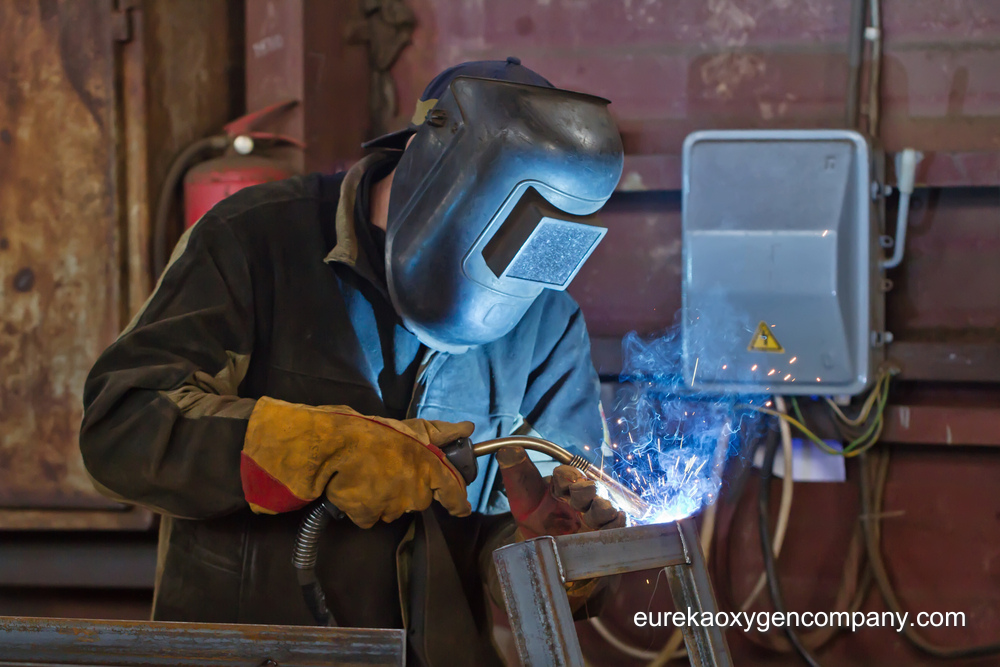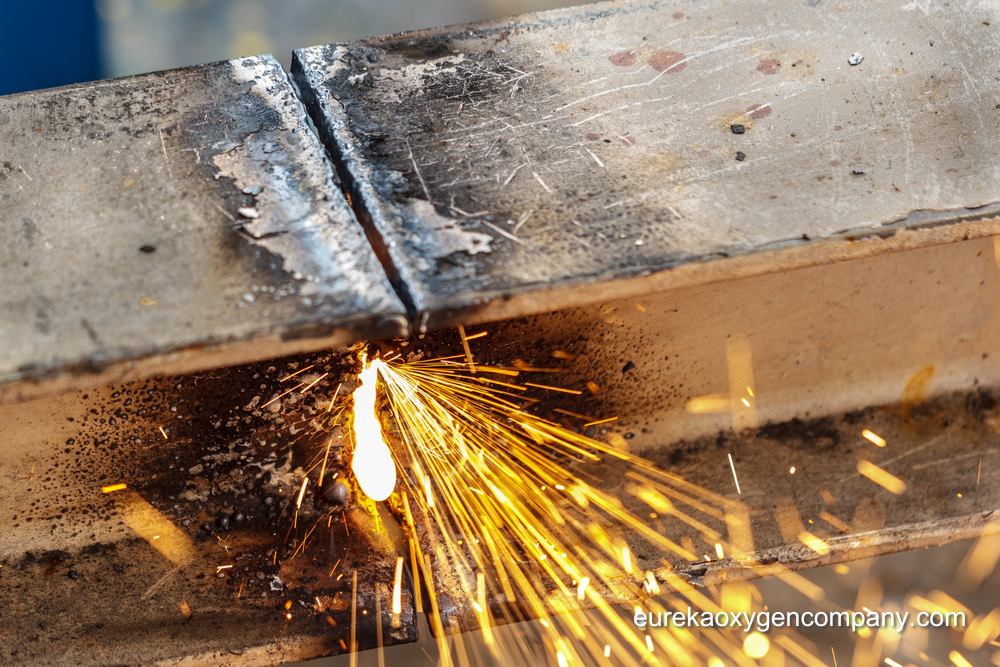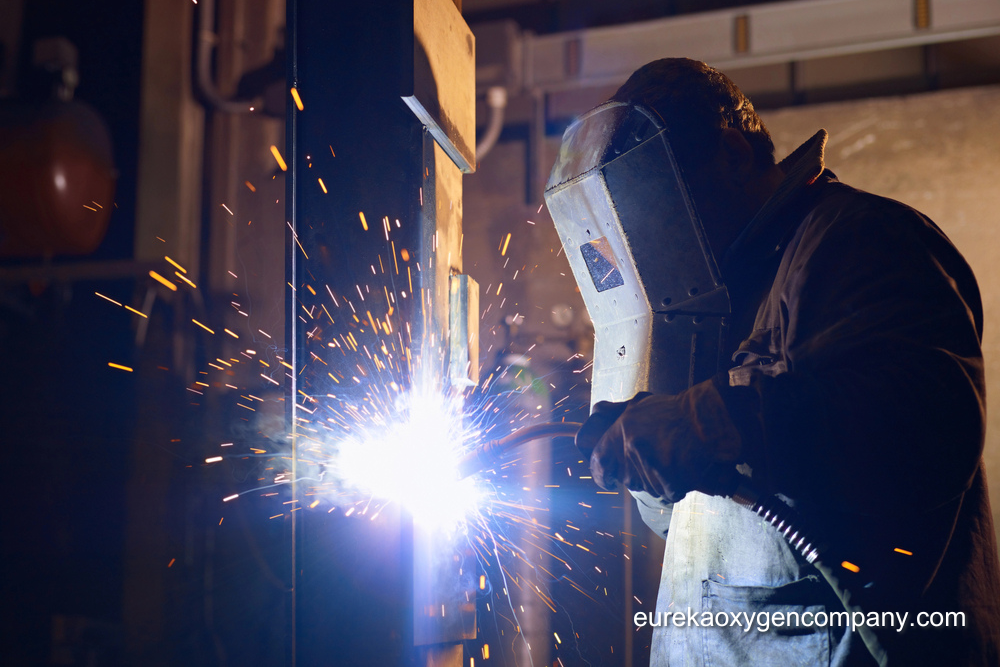Learn to weld with our ultimate beginner guide: from basic techniques to welding safety
Welding Basics: What You Need To Know About Beginner Welding
Welding is a process where two or more pieces of metal are joined with molten material. It may sound easy, but many different welding techniques can be used to achieve specific results.
When two metals are joined they receive the name of ‘parent materials’, and the material used to join them is called filler. The finished join is called weldment.
The most common types of welding for beginners are MIG welding and Stick welding. Here’s a brief description of each so you can start acquiring new terms:
MIG Welding (Metal Inert Gas Welding)

→ Uses a continuously fed wire electrode, which melts and fuses with the workpiece.
→ Requires a shielding gas to protect the weld from atmospheric contamination.
→ It is generally faster than other welding processes due to the continuous wire fed.
→ Suitable for a wide range of materials, including aluminum, steel, and stainless steel.
Stick Welding (Shielded Metal Arc Welding/SMAW)
→ Uses a flux-coated electrode (stick) to create an electric arc between the electrode and the workpiece.
→ Requires a bit more control and skill since the welder controls the movement of the electrode.
→ Can be used in various positions and is effective for welding thick materials.
→ Generally more cost-effective for certain applications.
Welding Safety 101

As a beginner who wants to learn to weld, it is critical to understand the importance of welding safety. Before you start looking for pieces to join together, please take your time to gather all the necessary and regulated welding equipment and your personal protective equipment.
If you don’t know what you should be wearing, our ultimate welding safety kit would include:
- Fireproof clothing that covers as much skin as possible (long sleeves, pants, gloves, etc). Bear in mind that your welding gloves must be heat-resistant and high-quality, and they’re a barrier between the lava-hot metal and your hands!
- Safety glasses or a welder’s helmet, depending on the type of welding projects you’re working with.
- Approved respirator. Welding causes heavy fume emissions, and if your workplace doesn’t have good ventilation (which it should) or you want to be extra careful, a respirator is highly recommended.
- Welding boots. These typically feature a thin sheet of steel in the toe to prevent injuries if a heavy object lands on your feet.
Apart from this, welding safety includes working in an appropriate place that counts with proper ventilation that keeps fumes and gasses from the breathing zone. A fire extinguisher should be within reach or even fire hoses, in case an extinguisher is not available.
Flammable materials should be kept in a special place, and if they are in the same room as your welding, you must cover them with a fire-resistant blanket or sheet of metal.
The Art Of The Bead: Creation, Speed & Angle
Various welding techniques are beginner-friendly, but before jumping right into them, let’s talk about the art of the bead.
In simple words, a bead is the line of metal you create when welding, and it requires you to move your welding tool along the metal pieces to allow the melted material to stick the two pieces together. Making a good, smooth bead is important, thus the better the bead, the stronger the connection between the metal pieces will be.
As for the speed of this process, it is important to move at a pace that feels right. Not too slow or your material will become too hot, nor too fast or the pieces won’t join properly.
Finally, it is important to understand the angle used for this process. Depending on the joint you’re doing, you’d want to hold your tool straight or tilted.
Beginner Welding Joints You Should Practice
Butt joint. Joining two pieces of metal along the edges. Imagine placing them side by side or joining two ends of a metal tube to make it longer.
Lap joint. Use one piece of metal to cover another one, sort of overlapping them and welding when they overlap.
Tee joint. Welding two pieces where they intersect, like forming a ‘T’ shape. You might need to add extra welds on the sides for more strength.

Final Words
Welding is a wonderful hobby and career that allows you to create things from scratch. In this guide, we hope to give you some direction on where to start with welding, as well as some key safety considerations.
Eureka Oxygen has a robust supply of welding supplies for all your welding projects, and we’re proud to deliver to various locations, from the Golden Gate Bridge to Gold Beach, OR.

